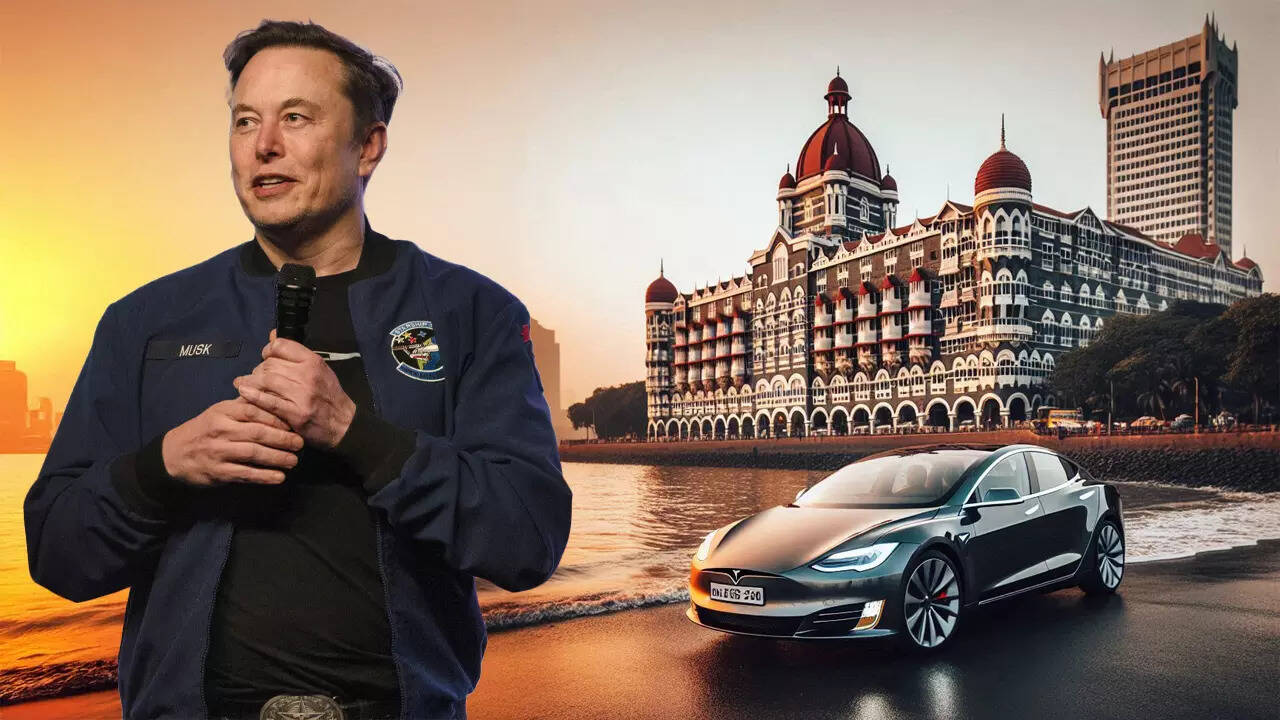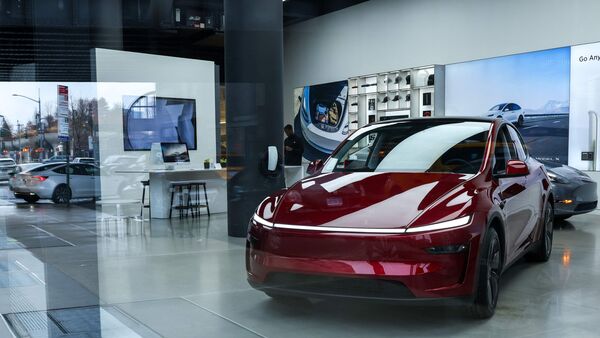Tesla, the world-renowned electric vehicle (EV) manufacturer, is set to make a historic debut in India with the grand opening of its first showroom and experience center in Mumbai on July 15, 2025. This milestone is a significant leap for the American EV giant as it enters one of the fastest-growing automotive markets, signaling a new era for electric mobility in India. The showroom, located in the prestigious Bandra Kurla Complex (BKC), is designed to be much more than a retail outlet—it’s a state-of-the-art experience center that showcases Tesla’s innovative technology and vehicles. Here are ten game-changing facts about Tesla’s India launch and what it means for the country’s EV landscape.
Tesla’s entry into the Indian market marks a pivotal moment not only for the company but also for the country’s evolving automotive landscape. India has long been seen as a challenging market for electric vehicles due to infrastructure limitations, price sensitivity, and regulatory complexities. However, Tesla’s decision to open its first showroom in Mumbai signals a growing confidence in India’s readiness to embrace premium electric mobility. This move could serve as a catalyst, encouraging other global EV manufacturers to accelerate their plans for India, thereby expanding consumer choice and driving competition.
The choice of Mumbai’s Bandra Kurla Complex for Tesla’s first showroom is strategic and symbolic. BKC is a hub of economic activity, housing corporate offices, luxury residences, and affluent consumers who are more likely to adopt cutting-edge technology and premium products. By situating its showroom here, is positioning itself at the heart of India’s urban elite, who can afford and appreciate the brand’s innovation and sustainability ethos. This location also offers a platform to showcase its vehicles to influential decision-makers and trendsetters, amplifying its impact beyond just sales.
Tesla’s initial strategy of importing fully built vehicles, while costly due to high import duties, allows the company to test the waters without committing to large-scale investments in manufacturing infrastructure. This approach reflects a pragmatic understanding of India’s complex market dynamics. It gives the flexibility to adapt its offerings based on consumer feedback and regulatory changes. Moreover, it allows the company to build brand awareness and establish a loyal customer base that could justify future investments in local assembly or production facilities, potentially lowering costs and expanding accessibility.
The Model Y’s introduction to the Indian market is particularly noteworthy given its global success. This compact SUV combines performance, range, and advanced features, making it well-suited for India’s diverse driving conditions. Its all-electric powertrain offers a compelling alternative to traditional petrol and diesel SUVs, which dominate the country’s roads. The Model Y’s spacious interior and cutting-edge technology appeal to urban families and professionals seeking a blend of luxury and sustainability. Its launch could redefine consumer expectations and accelerate the shift towards electric SUVs in India.
Tesla’s integrated 3S (sales, service, and spares) model is a departure from the conventional Indian automotive retail ecosystem, which relies heavily on third-party dealerships. By controlling the entire customer journey, aims to deliver a seamless and premium ownership experience. This includes direct engagement with customers for sales consultations, personalized service appointments, and genuine parts availability. Such a model not only enhances customer satisfaction but also strengthens brand loyalty, as buyers feel supported throughout the lifecycle of their vehicle.

1. Tesla’s First Indian Experience Center in Mumbai
The inaugural showroom in India is opening its doors in Mumbai’s Bandra Kurla Complex, a prime business and luxury district. Designed as an “experience center,” this facility will allow prospective buyers to explore Tesla’s range of vehicles, including the much-anticipated Model 3 and Model Y, which are expected to be the first models available in India. The launch event on July 15 is the result of years of anticipation and careful planning.
2. Fully Imported Vehicles for the Indian Market
Tesla’s initial entry into the Indian market is through fully imported vehicles. The first batch includes several Model Y SUVs and Model 3 sedans, brought in from Tesla’s Shanghai Gigafactory. While this approach means cars will face high import duties, it allows the company to assess the Indian market’s response before considering local manufacturing or assembly. This move reflects a cautious but optimistic strategy tailored to India’s complex automotive landscape.
3. Model Y as the Flagship Launch Vehicle
The Model Y, recognized globally for its design, range, and advanced features, is poised to be Tesla’s flagship model in India. This SUV is well-suited for urban and suburban buyers looking for premium electric mobility. Alongside the Model Y, the Model 3 sedan will also be available, providing a more accessible entry point into the Tesla ecosystem while maintaining the brand’s hallmark performance and technology.
4. Integrated Sales, Service, and Spares
Mumbai showroom is a comprehensive 3S facility—sales, service, and spares—operated directly by the company. This setup departs from the traditional Indian automotive retail model, which typically relies on third-party dealerships. By keeping operations in-house, ensures a seamless customer experience and maintains control over service quality, brand image, and after-sales support.
5. Investment in Vehicles, Charging, and Merchandise
In preparation for the launch,it has imported a significant inventory of vehicles, charging equipment, and branded merchandise. This includes not only cars but also Superchargers and accessories, laying the foundation for a robust ownership ecosystem. The presence of Tesla’s charging infrastructure is crucial for building consumer confidence and supporting the adoption of EVs in India.
6. Pricing and Import Duty Challenges
Tesla’s vehicles are subject to India’s high import duties, which can reach up to 70% of the car’s value. This means the on-road price for a Model Y or Model 3 will be substantially higher than in other markets, targeting affluent urban buyers in the initial phase. While this limits mass-market accessibility, it sets the stage for Tesla’s future plans, which may include local assembly or manufacturing to reduce costs and broaden its customer base.

7. Expansion Plans Beyond Mumbai
Following the Mumbai launch, Tesla is expected to expand its presence to other major cities, with Delhi-NCR likely to be the next destination. This phased rollout is aimed at building brand awareness and accessibility in India’s largest urban markets. Tesla’s long-term vision may involve establishing a manufacturing or assembly facility in India, depending on market response and policy developments.
8. Strategic Timing Amidst India’s EV Push
Tesla’s entry comes at a time when India is aggressively promoting electric mobility to reduce pollution and dependence on fossil fuels. The government has introduced incentives and policies to accelerate EV adoption, and Tesla’s arrival is expected to energize the premium EV segment and spur innovation among competitors. The move is seen as a strategic bet on India’s rapidly evolving automotive landscape.
9. Consumer Excitement and Industry Impact
The announcement of Tesla’s showroom opening has generated immense excitement among Indian consumers, especially in urban centers. Tesla’s brand appeal, advanced technology, and sustainability focus resonate with India’s environmentally conscious and tech-savvy buyers. Industry watchers believe Tesla’s presence will raise the bar for EV technology and customer experience, prompting established automakers to enhance their offerings.
10. Challenges: Infrastructure, Pricing, and Consumer Awareness
Despite the buzz, Tesla faces several challenges in India. The high cost of imported vehicles restricts its reach to a niche market. India’s charging infrastructure, though developing, still needs significant expansion to support widespread EV adoption. Tesla will also need to invest in consumer education and after-sales service to build trust and loyalty among Indian buyers. How the company addresses these challenges will shape its long-term success in the country.

Conclusion
It’s opening of its first showroom in Mumbai on July 15, 2025, is a landmark event for India’s automotive industry. With innovative vehicles, a premium customer experience, and a commitment to sustainability, Tesla is poised to reshape the Indian EV landscape. While high import duties and infrastructure gaps present hurdles, Tesla’s entry is expected to accelerate the growth of electric mobility in India, inspiring both consumers and competitors. As the journey begins, Tesla’s move signals a bold step toward a cleaner, greener future for India’s roads.
The investment in charging infrastructure and accessories is a critical component of Tesla’s India strategy. Range anxiety remains one of the biggest barriers to EV adoption in India, where public charging stations are still sparse. By bringing its proprietary Supercharger technology and home charging solutions, addresses this challenge head-on. These facilities will not only serve owners but also raise awareness about the convenience and feasibility of electric vehicles. Over time, infrastructure could serve as a blueprint for broader EV ecosystem development across the country.
Pricing remains a significant hurdle for Tesla in India. The high import duties and taxes inflate the cost of Tesla vehicles, limiting their appeal to a niche market of affluent buyers. While this restricts Tesla’s immediate market share, it also establishes the brand as a premium luxury product, creating aspirational value. Tesla’s challenge will be to balance exclusivity with accessibility, potentially through future local manufacturing that could reduce costs and enable more competitive pricing. This balance will be crucial for Tesla to transition from a niche player to a mainstream EV brand in India.
Tesla’s phased expansion plan, starting with Mumbai and moving to Delhi-NCR and other metropolitan areas, reflects a measured approach to market penetration. These urban centers have higher per capita incomes, better infrastructure, and greater environmental awareness, making them ideal launchpads for premium EV adoption. As Tesla builds its footprint, it will gather valuable insights into consumer preferences, regulatory environments, and operational challenges, which will inform its long-term strategy for India’s diverse and complex market.
The timing of entry aligns well with India’s national goals for electric mobility and environmental sustainability. The government’s push for cleaner transportation through incentives, subsidies, and infrastructure development creates a favorable backdrop for Tesla’s growth. Tesla’s global reputation for innovation and sustainability complements India’s ambitions to reduce carbon emissions and dependence on fossil fuels. By entering now, Tesla positions itself as a key player in India’s green transition, potentially influencing policy and consumer behavior.
Despite the excitement, faces challenges beyond pricing and infrastructure. Consumer education about EV technology, maintenance, and ownership costs is still in its infancy in India. This will need to invest in outreach and support programs to demystify electric vehicles and build trust among potential buyers. Additionally, the company must navigate regulatory complexities, including import policies, safety standards, and local compliance. Successfully addressing these challenges will be critical for Tesla to establish a sustainable and scalable presence in India’s rapidly evolving automotive market.
Follow: Tesla

